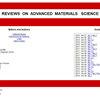二维条件下RAC碳酸化深度预测的半经验模型
IF 3.6
4区 材料科学
Q2 MATERIALS SCIENCE, MULTIDISCIPLINARY
引用次数: 0
摘要
摘要再生骨料混凝土在实际工程建设中得到了广泛的应用,建筑在其允许强度范围内的抗碳化性能是目前迫切需要考虑的问题。通过构建再生混凝土碳化深度的时间预测模型,可以确定完全碳化区到达混凝土内部钢筋深度的时间,进而确定建筑物的碳化寿命。然而,目前再生骨料(RAs)的碳化模型存在理论和实践上的局限性。现有的半经验模型没有定量考虑RAs粒径对碳化深度的影响,只是定性地分析了粒径对碳化深度的影响。在实际应用中,现有模型通常只确定实验室条件下一维碳化条件下的结构寿命,而忽略了实际工程中二维碳化主要发生的事实。为了克服这些局限性,提出了一种预测再生混凝土碳化深度的半经验模型,用于结构碳化寿命预测。基于RAs的替代率、外部环境影响以及构件的应力状态,在碳化深度预测模型中考虑了RAs的粒径,并通过对不同配比的试件进行碳化实验,拟合模型参数。利用大量已有的实验数据对拟合模型进行验证,结果表明该模型对所构建的构件具有较好的适用性。将该模型应用于实际工程中主要部件的碳化寿命预测,并考虑了二维碳化。研究发现,当RAs替换率为40%时,实际工程中预测的主要部件碳化后寿命接近设计寿命。本文章由计算机程序翻译,如有差异,请以英文原文为准。
A semi-empirical model for predicting carbonation depth of RAC under two-dimensional conditions
Abstract Recycled aggregate concrete has been widely used in practical engineering construction, and the carbonation resistance of buildings within their allowable strength range is currently urgently needed to be considered. By constructing a time prediction model for the carbonation depth of recycled concrete, the time when the complete carbonation zone reaches the depth of the steel bar inside the concrete can be determined, and then the carbonation life of the building can be determined. However, the current carbonation model for recycled aggregates (RAs) has theoretical and practical limitations. The existing semi-empirical model has not quantitatively considered the influence of particle sizes of RAs on the carbonation depth, but only qualitatively analyzed the effect of particle size on the carbonation depth. In practical applications, the existing models usually only determine the structural life under one-dimensional carbonation conditions in laboratory conditions, ignoring the fact that two-dimensional carbonation mainly occurs in actual engineering. In order to overcome these limitations, a semi-empirical model for predicting the carbonation depth of recycled concrete is proposed for life prediction of structural carbonation. Based on the replacement rate of RAs, external environmental influences, and the stress state of components, the particle size of RAs is considered in the carbonation depth prediction model, and model parameters are fitted by performing carbonation experiments on specimens with different mix ratios. The model is then validated by applying a large amount of existing experimental data to the fitted model, and the results show that the model has good applicability for the constructed components. Furthermore, the model is used to predict the carbonation life of the main components in actual engineering and considers two-dimensional carbonation. It was found that when the replacement rate of RAs was 40%, the predicted life of the main components after carbonation in actual engineering was close to the design life.
求助全文
通过发布文献求助,成功后即可免费获取论文全文。
去求助
来源期刊

Reviews on Advanced Materials Science
工程技术-材料科学:综合
CiteScore
5.10
自引率
11.10%
发文量
43
审稿时长
3.5 months
期刊介绍:
Reviews on Advanced Materials Science is a fully peer-reviewed, open access, electronic journal that publishes significant, original and relevant works in the area of theoretical and experimental studies of advanced materials. The journal provides the readers with free, instant, and permanent access to all content worldwide; and the authors with extensive promotion of published articles, long-time preservation, language-correction services, no space constraints and immediate publication.
Reviews on Advanced Materials Science is listed inter alia by Clarivate Analytics (formerly Thomson Reuters) - Current Contents/Physical, Chemical, and Earth Sciences (CC/PC&ES), JCR and SCIE. Our standard policy requires each paper to be reviewed by at least two Referees and the peer-review process is single-blind.
 求助内容:
求助内容: 应助结果提醒方式:
应助结果提醒方式:


